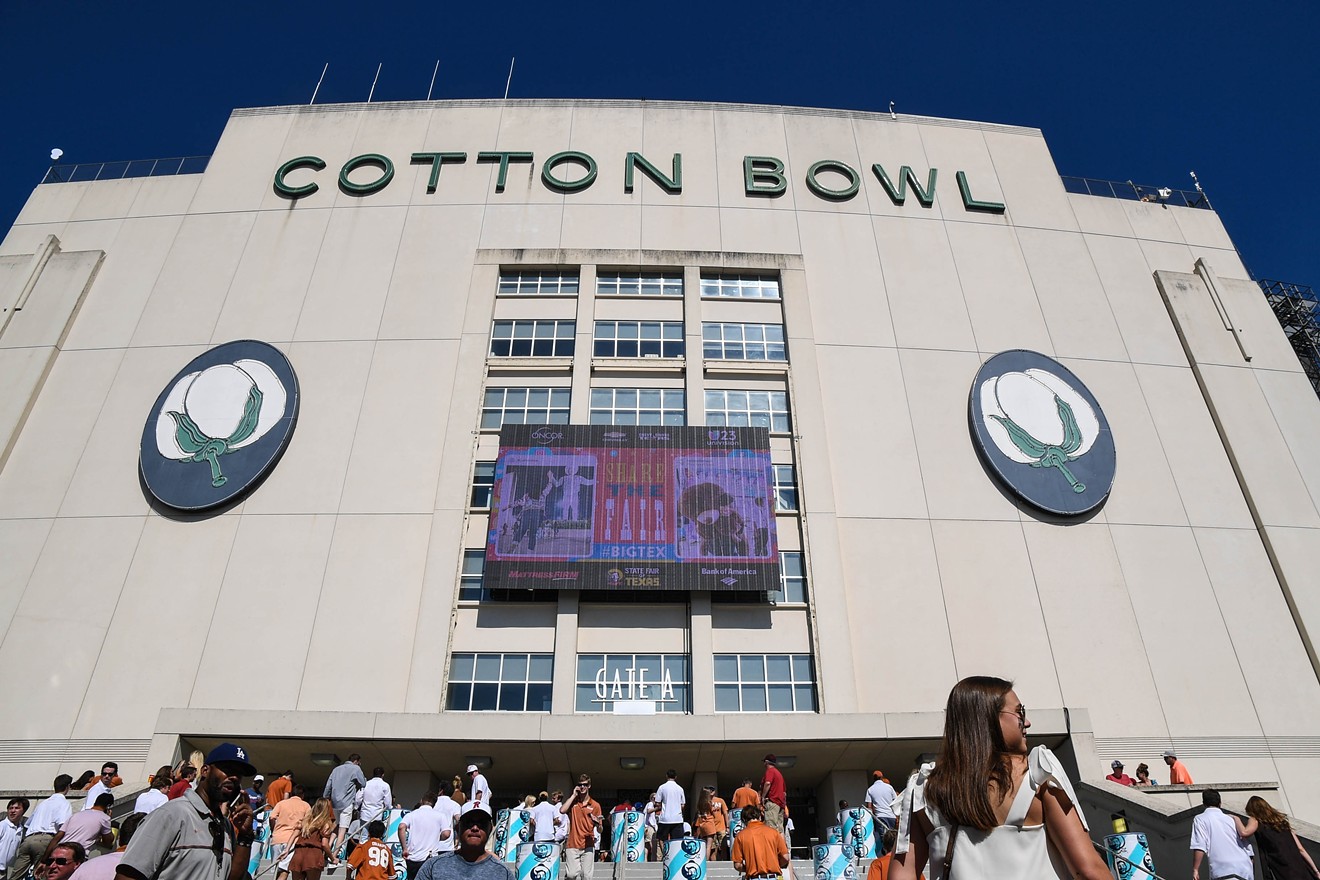On the afternoon of New Year's Day, right about the time the Dallas Stars face off against the Nashville Predators at the Cotton Bowl, the forecast calls for a chance of rain and temperatures in the mid 50s — not balmy, maybe, but well above freezing.
Hockey, not to put too fine a point on it, is played on ice. So how, in the middle of what passes for winter in Texas, do NHL crews make sure the rink is a smooth, icy surface and not a 17,000-square-foot puddle of slush?
The answer, at least in principle, isn't all that different from the way it works in a climate-controlled NHL arena: remove enough heat from the surface that water freezes into a solid sheet of ice, and keep the temperature stable so that it stays that way.
But doing all that outdoors in a place that isn't designed for hockey presents an interesting set of challenges, said Steve Mayer, the NHL's chief content officer. Temperatures can fluctuate drastically from night to day, and from one day to the next. There can be harsh, direct sunlight one day and driving rain the next. And during all that, crews are building a brand-new ice rink where there's never been one before.
"It is very different because you're building everything from scratch," Mayer said as he stood in the stands at the Cotton Bowl on Friday afternoon. "This was a football field two weeks ago."
The work begins weeks before game day. Crews begin by arranging aluminum trays across the football field. Then, using the NHL's specially built mobile refrigeration unit, they pump as much as 3,000 gallons of glycol coolant through the trays until they come down to 22 degrees, which is the ideal surface temperature for a hockey rink. Once it comes down to temperature, crews install rink boards. Then, workers pass sprayers across the rink hundreds of times, spraying a fine mist of water and building the ice sheet a little at a time until it's 2 inches thick.
Once the ice sheet is built, workers cover it with a reflective blanket, which helps keep it at 22. They use a monitoring system called Eye on the Ice, which gives updates on ice temperatures at several spots across the rink. If the ice gets too warm, the staff pumps more glycol coolant through the aluminum trays under the ice. If it gets too cold — something that shouldn't be an issue in Dallas — the staff can use a heating system to warm it up.
Rain can present a bigger challenge, Mayer said. The game most likely won't be delayed or canceled unless there's "a significant downpour," he said. If there are light showers, officials may call brief timeouts to let players deal with wet, fogged-up visors. Mayer noted that it rained through an entire outdoor game in Philadelphia last February between the Pittsburgh Penguins and the Flyers, and the league didn't cancel the game.
"We've played in the rain. We've also held up games in the rain," he said.
If Wednesday's game does go as planned, it won't be the warmest outdoor NHL game in the last few years. On Feb. 27, 2016, the Colorado Avalanche hosted the Detroit Red Wings at Coors Field, the home of the Colorado Rockies. The temperature in Denver that day was 65 degrees. Two years before that, on Jan. 25, 2014, the Anaheim Ducks played the Los Angeles Kings at Dodger Stadium, where the temperature was 62.
The Dallas Stars host the Nashville Predators at 12:30 p.m. Wednesday at the Cotton Bowl in Fair Park. The 2020 Bridgestone NHL Winter Classic will be shown on NBC 5. Tickets are here.
[
{
"name": "Air - MediumRectangle - Inline Content - Mobile Display Size",
"component": "18855504",
"insertPoint": "2",
"requiredCountToDisplay": "2"
},{
"name": "Editor Picks",
"component": "17105533",
"insertPoint": "4",
"requiredCountToDisplay": "1"
},{
"name": "Inline Links",
"component": "18349797",
"insertPoint": "8th",
"startingPoint": 8,
"requiredCountToDisplay": "7",
"maxInsertions": 25
},{
"name": "Air - MediumRectangle - Combo - Inline Content",
"component": "17105532",
"insertPoint": "8th",
"startingPoint": 8,
"requiredCountToDisplay": "7",
"maxInsertions": 25
},{
"name": "Inline Links",
"component": "18349797",
"insertPoint": "8th",
"startingPoint": 12,
"requiredCountToDisplay": "11",
"maxInsertions": 25
},{
"name": "Air - Leaderboard Tower - Combo - Inline Content",
"component": "17105535",
"insertPoint": "8th",
"startingPoint": 12,
"requiredCountToDisplay": "11",
"maxInsertions": 25
}
]













